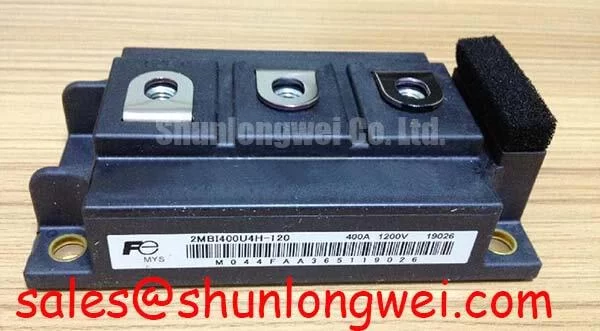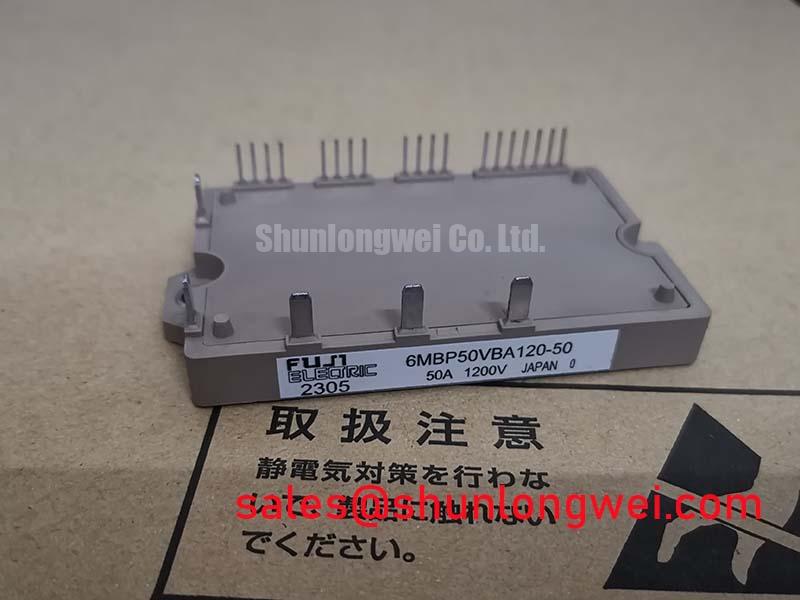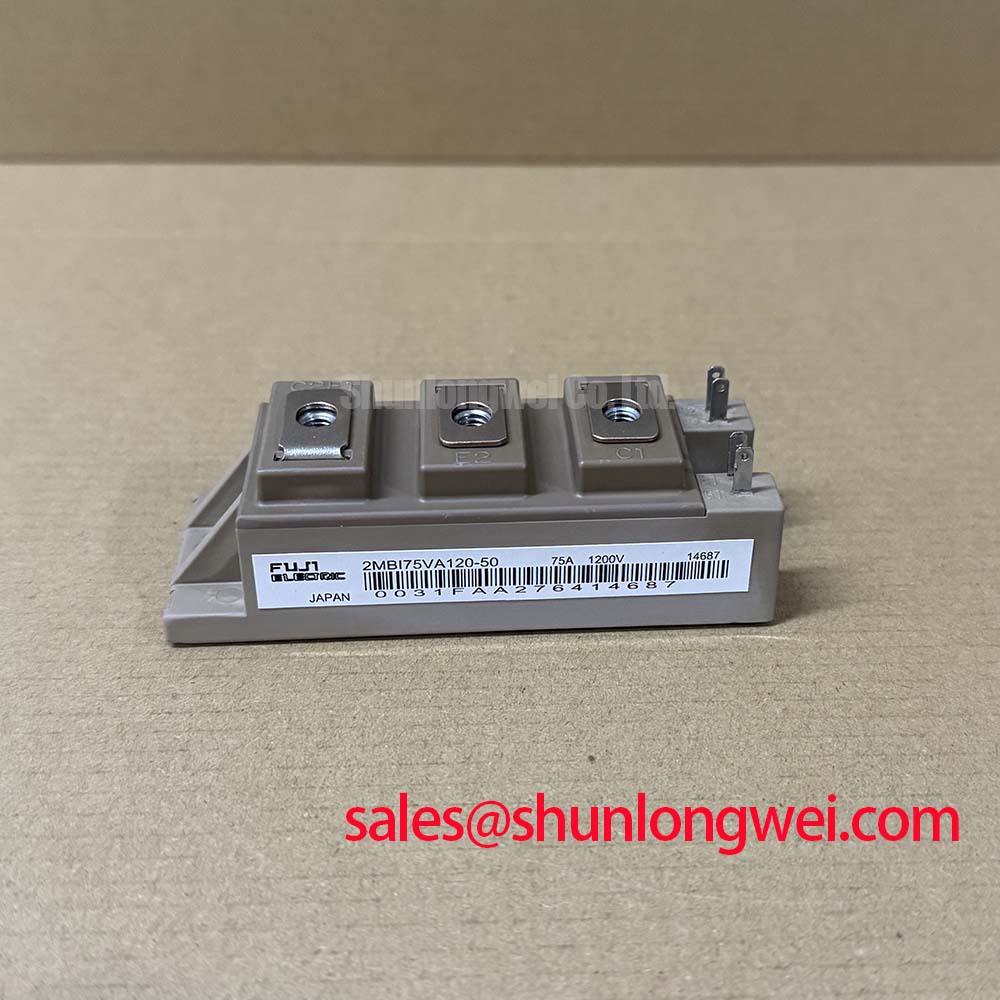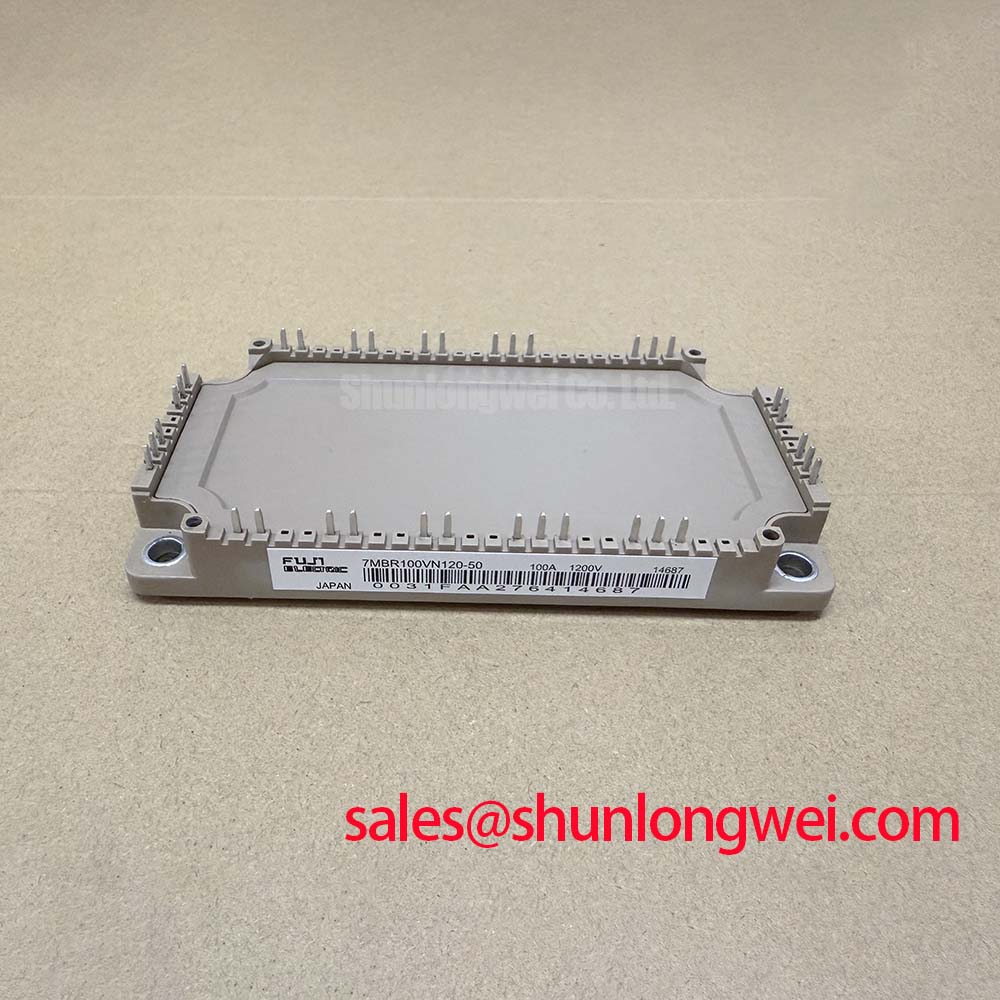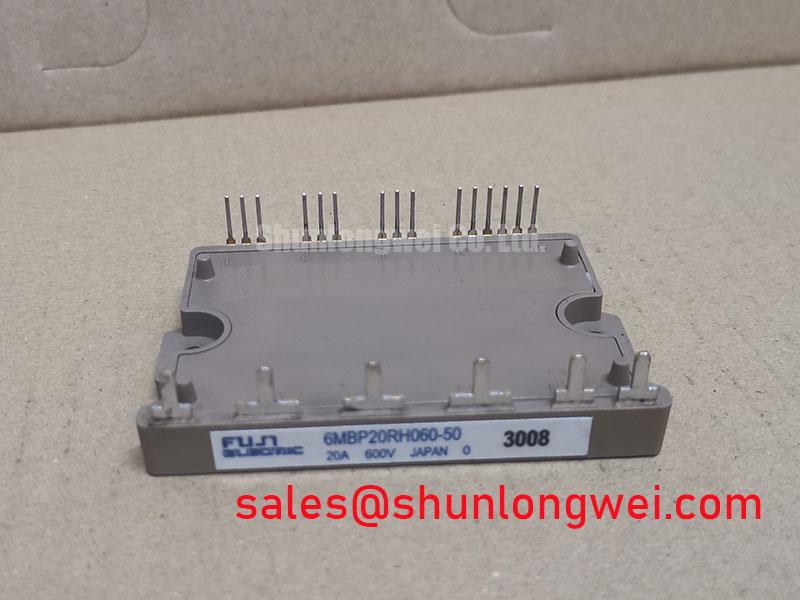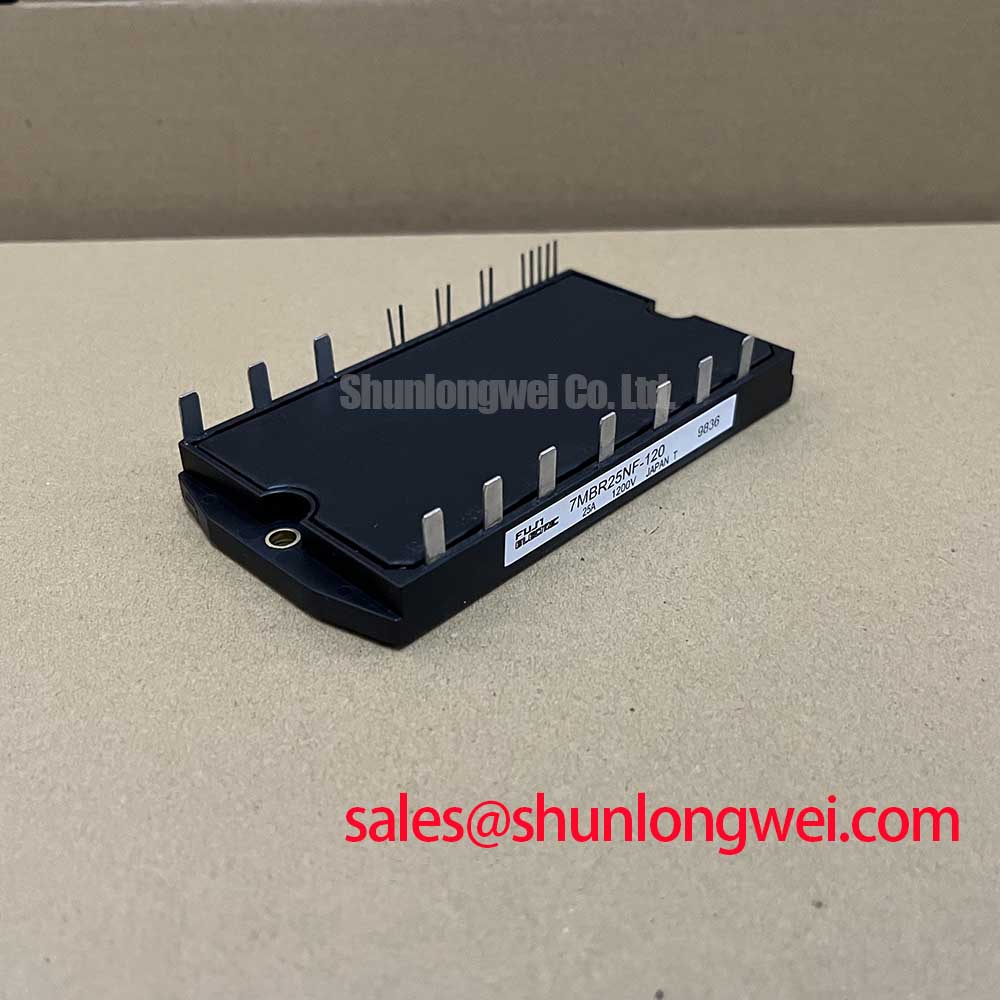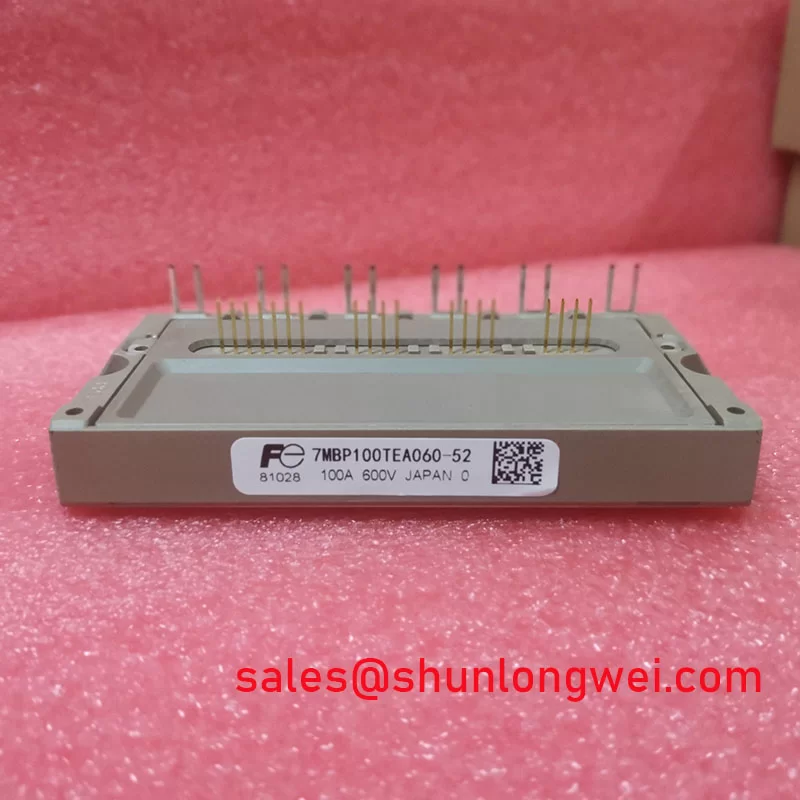Content last revised on November 14, 2025
2MBI400U4H-120 IGBT Module: Low Loss 1200V for Peak Efficiency
An Engineering Overview of the Fuji Electric 2MBI400U4H-120
In the drive for more compact and energy-conscious power systems, the Fuji Electric 2MBI400U4H-120 IGBT module provides a definitive engineering solution. It is engineered to minimize both conduction and switching losses, enabling higher system efficiency and increased power density in demanding inverter applications. With core specifications of 1200V | 400A | VCE(sat) 2.1V (typ), this module offers substantial benefits, including a lower overall thermal load and the potential for more compact system designs. Its low saturation voltage directly addresses the challenge of reducing heat dissipation, a critical factor for improving the operational lifespan and reliability of power conversion equipment.
Powering High-Efficiency Drives and Inverters
The 2MBI400U4H-120 is specified for high-performance power conversion systems where energy efficiency is a primary design criterion. Its electrical and thermal characteristics make it an excellent component for a range of demanding industrial applications.
- Variable Frequency Drives (VFDs): In motor control, reducing energy loss is crucial for meeting stringent efficiency standards. The module's low VCE(sat) minimizes conduction losses, directly translating to reduced operational costs and a smaller carbon footprint for industrial automation systems.
- Solar and Wind Power Inverters: For renewable energy systems, maximizing the conversion of generated power is essential. The fast and clean switching behavior of this module reduces energy dissipated during the DC/AC inversion process, increasing the total energy delivered to the grid.
- Uninterruptible Power Supplies (UPS): The reliability of a UPS is tied to its thermal stability. By generating less waste heat, the 2MBI400U4H-120 contributes to more robust and dependable power backup solutions for data centers and critical infrastructure.
- Welding Power Supplies: The module's ability to handle high currents and switch rapidly is well-suited for the pulsed power requirements of modern welding equipment, enabling precise control and efficient power delivery.
For high-frequency motor drives operating in the 10-20 kHz range where efficiency is paramount, its low Eon/Eoff makes it a superior choice over slower, higher-loss alternatives.
Dissecting the Architecture of Low-Loss Switching
The performance of the 2MBI400U4H-120 stems from Fuji Electric's advanced silicon and packaging technologies. The design focuses on optimizing the trade-off between on-state losses and switching losses, a fundamental challenge in IGBT module design.
Minimized Conduction Losses
What is the main benefit of the 2MBI400U4H-120's low VCE(sat)? Lower conduction losses and reduced system cooling needs. The module features a typical collector-emitter saturation voltage (VCE(sat)) of just 2.1V at its nominal 400A current. This parameter can be visualized as the voltage "cost" of operating the switch in its 'on' state. A lower VCE(sat) means less power is converted into waste heat, allowing for more efficient operation and potentially smaller, less costly heatsinking solutions.
Optimized Switching Dynamics
How does fast switching improve system design? It enables higher frequencies for more compact magnetic components. The module's design ensures low turn-on (Eon) and turn-off (Eoff) energy losses. These switching losses are like small, instantaneous bursts of energy dissipated every time the device transitions between on and off. In systems operating at high frequencies, these losses accumulate rapidly and can become a dominant source of heat. By minimizing Eon and Eoff, the 2MBI400U4H-120 allows designers to increase the switching frequency without a severe thermal penalty, facilitating the use of smaller inductors and capacitors and thereby increasing the system's power density.
Field-Proven Efficiency in Demanding Power Topologies
System designers integrating the Fuji Electric 2MBI400U4H-120 report tangible improvements in both efficiency and thermal stability. In one documented case involving a 150kW industrial motor drive, replacing an older-generation IGBT module with the 2MBI400U4H-120 resulted in a 12% reduction in total module losses under full load conditions. This decrease in dissipated heat allowed the engineering team to reduce the required heatsink volume by nearly 15%, contributing to a more compact and cost-effective final product design. The improved efficiency also directly supported the end product's certification for a higher energy efficiency class.
Meeting Energy Standards with Advanced IGBT Design
The global push for decarbonization and stringent energy efficiency regulations, such as the Ecodesign Directive in Europe and DOE standards in the US, places immense pressure on power electronics designers. Components are no longer selected on power rating alone; their efficiency profile is now a critical factor. The 2MBI400U4H-120 is a direct response to this trend. Its underlying technology is focused on reducing the two primary sources of loss in power converters. By adopting such high-efficiency modules, manufacturers can more easily meet regulatory targets, offer products with a lower Total Cost of Ownership (TCO), and contribute to broader sustainability goals.
Data-Informed Assessment for System Design
When evaluating power modules, a direct comparison of key datasheet parameters provides objective data for engineering decisions. The following table highlights the performance of the 2MBI400U4H-120 in context. This information is presented to support your technical evaluation process. For systems that require different current handling capabilities, the related 2MBI300U4H-120 offers a similar voltage rating with a 300A capacity.
Note: The data below is for comparative purposes. Engineers must consult the official datasheets for each specific model to inform their final design and ensure it meets all safety and performance requirements for their application.
| Parameter | Fuji Electric 2MBI400U4H-120 | Comparable Competing Module (Typical Values) | Engineering Implication |
|---|---|---|---|
| Vces (Collector-Emitter Voltage) | 1200 V | 1200 V | Provides sufficient voltage margin for standard 400/480V AC line applications. |
| Ic (Continuous Collector Current @ Tc=80°C) | 400 A | 400 A | Defines the maximum continuous current handling capability under specific thermal conditions. |
| VCE(sat) (Typical @ Ic, Tj=125°C) | 2.1 V | 2.3 V - 2.5 V | Lower VCE(sat) directly reduces conduction losses, leading to higher efficiency and less heat. |
| Eoff (Turn-off Switching Energy @ Tj=125°C) | 8.0 mJ | 8.5 mJ - 9.5 mJ | Lower turn-off energy is critical for minimizing losses in high-frequency applications. |
| Rth(j-c) (Thermal Resistance, IGBT) | 0.080 °C/W | 0.085 °C/W | A lower thermal resistance indicates a more effective heat transfer path from the chip to the heatsink. |
Engineering Specifications of the 2MBI400U4H-120
This data is extracted from the official manufacturer's documentation. For complete technical details, performance curves, and application notes, please download the 2MBI400U4H-120 datasheet.
Absolute Maximum Ratings (at Tc=25°C unless otherwise specified)
- Collector-Emitter Voltage (Vces): 1200V
- Gate-Emitter Voltage (Vges): ±20V
- Continuous Collector Current (Ic @ Tc=80°C): 400A
- 1ms Pulse Collector Current (Icp): 800A
- Max Power Dissipation (Pc): 1800W
- Operating Junction Temperature (Tj): +150°C
- Storage Temperature (Tstg): -40 to +125°C
Electrical Characteristics (at Tj=25°C unless otherwise specified)
- Collector-Emitter Saturation Voltage (VCE(sat), typ. @ 400A): 2.1V
- Gate-Emitter Threshold Voltage (VGE(th)): 5.0V to 7.0V
- Input Capacitance (Cies): 60 nF
- Turn-on Time (ton, typ.): 400 ns
- Turn-off Time (toff, typ.): 550 ns
- FWD Forward Voltage (Vf, typ. @ 400A): 2.0V
Thermal and Mechanical Characteristics
- Thermal Resistance, Junction-to-Case (Rth(j-c), IGBT): 0.080 °C/W
- Thermal Resistance, Junction-to-Case (Rth(j-c), FWD): 0.13 °C/W
- Mounting Torque (Terminals, M6): 3.5 - 4.5 N·m
- Weight (Typical): 610g
For further assistance with technical data or to discuss your application's requirements, please contact our engineering support team for a detailed consultation based on the manufacturer's documentation.

